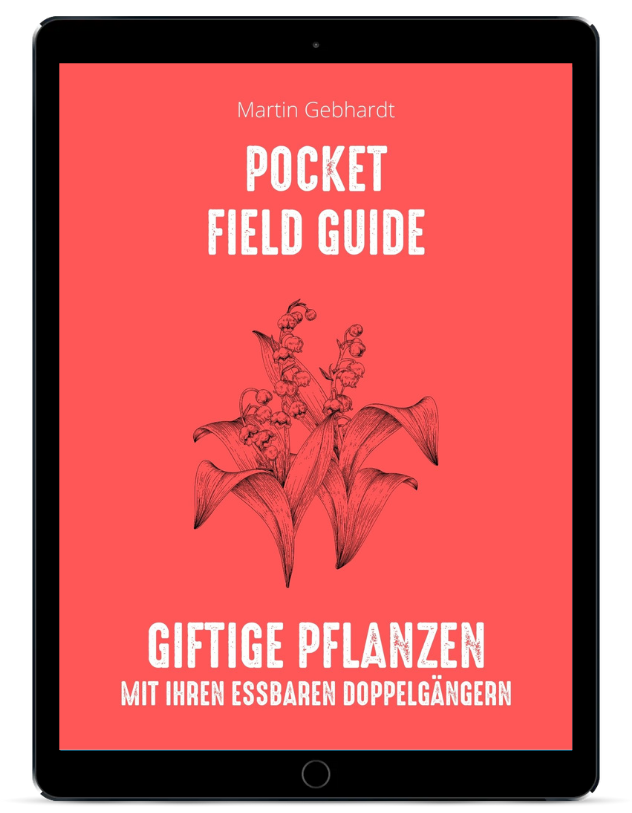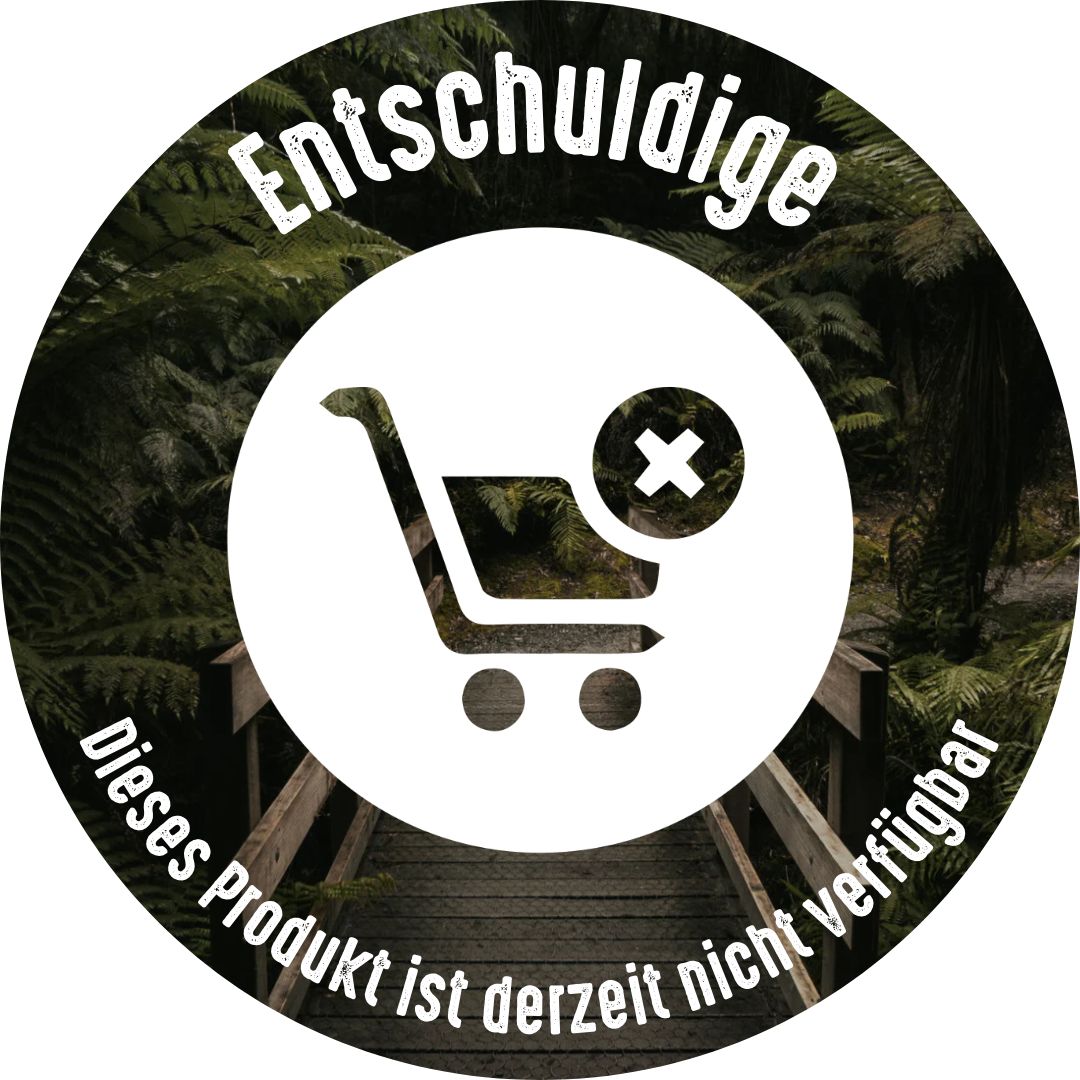![How to check whether a plant is edible [edibility test]. How to check whether a plant is edible [edibility test].](https://survival-kompass.de/img/artikel/pflanzen-geniessbarkeitstest.jpg)
How to check whether a plant is edible [edibility test].
👉 The key facts from this guide
- Avoid plants that are sticky, have milky or colored juices, have fruits in five parts, display warning colors like red, have shiny leaves or yellow/white berries, have seeds in pods, taste like soap, or have umbrella-shaped flowers.
- Observe animals and what they eat to get clues about edible plants, but be cautious, as not everything that animals eat is safe for humans.
- Perform an edibility test consisting of four steps: smell test, taste test, swallowing test, and eating a larger amount.
- If nausea or pain occurs after eating a plant, the stomach should be emptied.
- Plants are not major sources of energy, they mainly provide vitamins and fiber.
- There are many edible plants in native forests such as wild garlic, dandelion, nettle, ground ivy, chickweed, daisy, plantain, sorrel, ribwort plantain, chamomile, Jerusalem artichoke, and young birch leaves.
There are many plants that are edible.
However, some should be avoided at all costs.
To know all the plants in the world is impossible.
In this article, you will learn what is valid worldwide. Additionally, I will show you how to check if a plant is edible without any adverse effects.
Which plants you should avoid
Avoid plants that:
- are sticky
- have milky, white or yellowish sap
- have fruits divided into exactly five parts (e.g., oranges are divided into many parts)
- are the color red
- have shiny leaves
- have yellow or white berries
- have seeds in a pod
- taste like soap
- are umbrella-shaped or have umbrella-shaped flowers
Learn about 11 life-threatening poisonous plants that are almost identical to edible wild plants and can therefore be easily confused. I'll show you unique features to differentiate.
Take a look at my Pocket Field Guide here.
I mentioned earlier that you should avoid plants with milky sap. You may immediately think of dandelions. This is an exception, and there will always be exceptions.
Furthermore, I wrote that you should avoid red fruits. This is only a guideline for unknown plants. If you know the plants and fruits, such as tomatoes or apples, this statement does not apply.
This is about rules of thumb that are valid worldwide. It is better to follow them than to be careless.
Below you can see the red foxglove. All parts of the plant are highly poisonous. Two leaves can lead to a lethal poisoning.
![Wie du überprüfst, ob eine Pflanze essbar ist [Survival] The red foxglove is highly poisonous](https://survival-kompass.de/img/artikel/roter-fingerhut.jpg)
Observing animals
Another rule of thumb is to observe what animals eat.
What sparrows or pigeons eat can't be bad for you. If you're traveling to other countries, you can observe monkeys or small mammals.
You can try what they eat.
But do the edibility test (more on that below). Because here, too, there are exceptions and some birds also eat berries that are poisonous to us humans. If you're not certain, it's better not to try it.
For example, birds like to eat mistletoe berries, which are poisonous to us humans when eaten raw. You should not eat the leaves or berries.
![Wie du überprüfst, ob eine Pflanze essbar ist [Survival] Sparrows like to eat sunflower seeds, which are also edible for humans](https://survival-kompass.de/img/artikel/spatzen-essen-sonnenblumenkerne.jpg)
The edibility test
Your selection has already been limited due to the plants you avoid.
Now you have a plant or fruit in front of you, and you need to test its edibility.
If it's a plant, then look under the plant. Are there dead insects underneath? Then move on.
If not, proceed as follows:
1. Check the smell
To achieve this, rub a small sample of the plant between your fingers.
Smell the sample. If it smells unpleasant and gross, leave the plant alone.
If the smell is pleasant, move on to step two: Test a small piece.
2. Tongue test
If the smell is okay, taste a little with your tongue.
If it tastes bitter or is corrosive, stop the edibility test here.
If the sample is okay, move on to step three: Swallow test.
3. Swallow test
Take the plant sample and swallow it.
Wait at least half an hour.
Observe your body. How does it react in that time?
If you do not feel any changes, such as stomach pain, hiccuping, nausea, or esophageal spasm, move on to step four.
4. Eat a larger quantity
If you have reached step four and have no complaints, that is good.
Now eat a larger quantity of the plant and wait again.
Take an hour to digest before eating further quantities.
You will know within 24 hours whether the plant is okay.
Only then can you integrate it into your diet plan.
If nausea and pain occur
If you feel sick or are in pain, empty your stomach.
Put your finger deep in your throat.
It's best to drink a big gulp of saltwater before that.
Then everything will definitely come out.
Plants as food
Now, the sobering truth: Plants are unfortunately not energy suppliers.
If you need a lot of energy, you rely on carbohydrates and proteins.
Plants mainly contain vitamins and fiber.
But there is also a positive effect that your stomach has something to do, and the illusion that you have done something good for your body.
Examples of edible plants
In our local forests, you can find tasty forest salad.
For example:
- Wild garlic
- Dandelion
- Nettle
- ground elder
- Chickweed
- Daisy
- Plantain
- Sorrel
- Ribwort
- Chamomile
- Jerusalem artichoke
- Youthful birch leaves
![Wie du überprüfst, ob eine Pflanze essbar ist [Survival] Dandelion, different flowers, birch leaves](https://survival-kompass.de/img/artikel/verschiedene-pflanzenarten.jpg)
Have a look at my article "Edible Plants: This emergency food can be found in the forest (list + pictures)", where you can find many edible plants with leaves, flowers, roots, and berries.
Are you allowed to collect plants everywhere in the forest?
Unfortunately not. You are not allowed to collect plants in nature reserves.
Furthermore, not in forests where the forest owner prohibits this with signs.
Otherwise, you can take small amounts from forests and meadows for personal use.
Book recommendations
There are hundreds of plants, and many have been described accurately in books.
I would like to recommend two good books on this subject.
My question to you: have you ever eaten plants from the forest?
How did you try to determine if the plant is edible?


Author of the guide
Martin Gebhardt
Hey, I'm Martin. On my blog, you will learn the basics and numerous details about living in the wild. I think survival, bushcraft and the good life in nature are the keys to happiness. Find me here on Instagram or on YouTube. You can find more about my mission on the About Me page.
Was this guide helpful?
49 people found this guide helpful.
4.84 out of 5 points (51 Ratings)
Comments (0)
This post may contain affiliate links. So if you click on the links and make a purchase, I will receive a small commission at no additional cost to you. Click here, to learn more about it.




